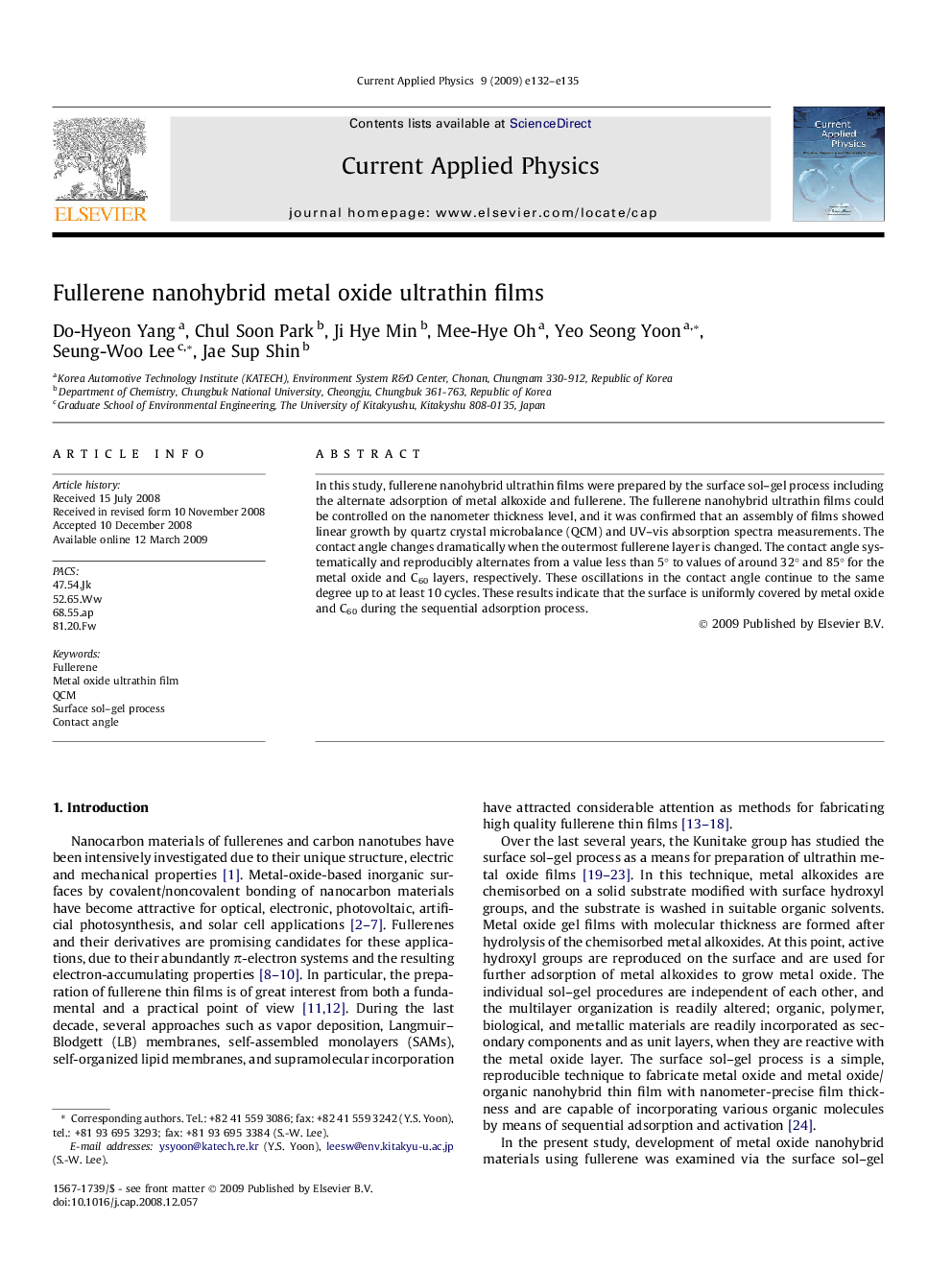| Article ID | Journal | Published Year | Pages | File Type |
|---|---|---|---|---|
| 1789286 | Current Applied Physics | 2009 | 4 Pages |
In this study, fullerene nanohybrid ultrathin films were prepared by the surface sol–gel process including the alternate adsorption of metal alkoxide and fullerene. The fullerene nanohybrid ultrathin films could be controlled on the nanometer thickness level, and it was confirmed that an assembly of films showed linear growth by quartz crystal microbalance (QCM) and UV–vis absorption spectra measurements. The contact angle changes dramatically when the outermost fullerene layer is changed. The contact angle systematically and reproducibly alternates from a value less than 5° to values of around 32° and 85° for the metal oxide and C60 layers, respectively. These oscillations in the contact angle continue to the same degree up to at least 10 cycles. These results indicate that the surface is uniformly covered by metal oxide and C60 during the sequential adsorption process.
